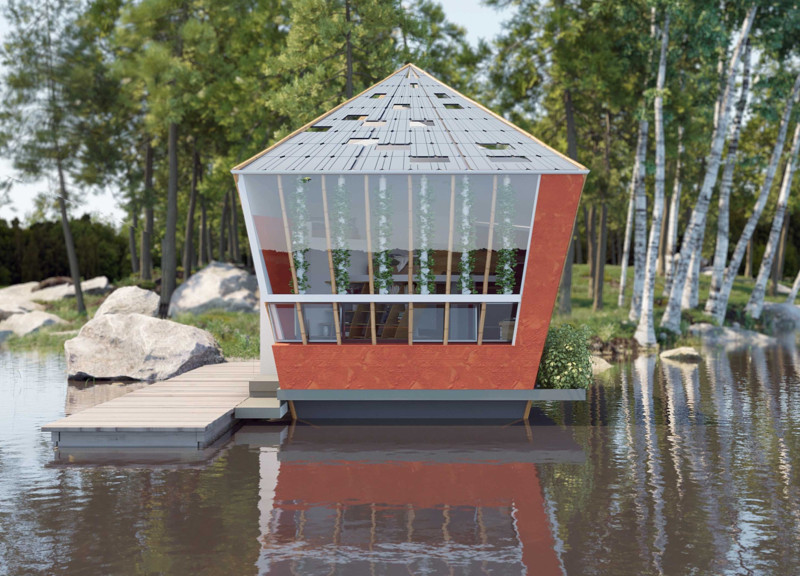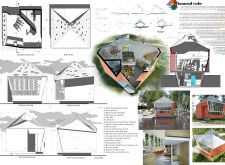5 key facts about this project
The primary function of the Diamond Cube is to provide a versatile living environment that can cater to various forms of habitation and lifestyle choices. Central to the design is an open-plan living area that promotes social interaction and connectivity among occupants. The building's layout also includes dedicated spaces for food production and personal utility, reinforcing the concept of sustainable living.
Material selection plays a crucial role in this design. Key materials utilized in the Diamond Cube include PTFE coated glass fabric for the roof, allowing natural light to permeate without excessive heat gain. The inclusion of resin-infused bamboo for structural elements provides strength while adhering to sustainable practices. Hempcrete, paired with clay cladding, forms the walls of the structure, offering both insulation and a breathable environment. Solar panels and a Tesla Power Wall further enhance the ecological footprint of the building, enabling energy generation and storage.
The roof's unique diamond shape sets this project apart from traditional designs. This configuration not only serves aesthetic purposes but also improves water drainage and facilitates airflow, ensuring effective climate control within the interior. The integration of a hydroponics system supports self-sufficient food production, allowing residents to grow their own produce. The careful organization of spaces, including loft areas for additional living or storage needs, reflects a commitment to maximizing functionality within a compact footprint.
Another notable aspect of the Diamond Cube is its use of geothermal heating and cooling systems, which promote energy efficiency while providing a consistent internal climate. The implementation of a sewage collection and treatment unit showcases a comprehensive approach to waste management, further reinforcing the project's sustainability ethos.
For those interested in exploring this innovative design, it is beneficial to review the project’s architectural sections and plans to gain a deeper understanding of its layout and functional components. Additionally, examining the architectural designs will provide insights into the unique approach taken in this project. The Diamond Cube stands as a notable example of contemporary architecture, illustrating how eco-friendly practices can be integrated into practical living solutions.























